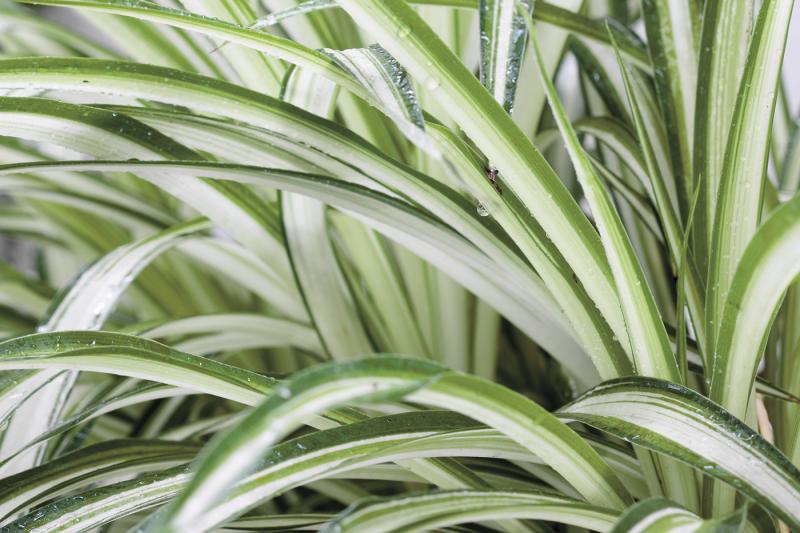Leonardo da Vinci drew plans for a helicopter in the late 1400s, although the first practical one wasn't flown until the 1930s. The word helicopter comes from “helico,” meaning spiral, and “pter,” which means made with wings.
My dear Italian grandmother referred to her favorite kitchen plant as the helicopter plant, but it’s better known as the spider plant (Chlorophytum comosum). It hung in her aroma-filled kitchen above the enameled table with the chrome legs. As kids we were at first scared when she offered us a crack, only later realizing she meant a cookie or cracker. One memorable time, three of us under the age of 5 drank coffee with Grandma under the helicopter plant, only to laugh and spit it out of our noses, at which point she called us some Italian phrase that we deciphered as “goose ta ma.” I am sure the real translation was not for small ears.
These are remarkably tough, resilient houseplants that thrive even when neglected. They prefer to have their soil dry out completely between waterings. When you do water them, make sure to thoroughly soak the pot. Helicopter plants will grow in both low and high light, but avoid exposing them to hot, direct sunlight.
During winter, most homes have dry air indoors from forced-air furnaces, making life more uncomfortable by drying out your skin, nose, and throat. Plants such as the spider plant will release extra moisture into the indoor air, raising the humidity and lessening the drying-out feeling.
Spider plants also clean the air as they absorb allergens, carbon dioxide and other airborne toxins, then release life-giving oxygen. So, it is not your imagination that your houseplants make you feel healthier and a tad more energetic during the winter.
The plants grow rosettes of thin, gently arching leaves that reach 12 to 18 inches long. The leaves can be solid green or striped green and white. Mature plants regularly send out shoots or stems that bloom with tiny, star-shaped white flowers. When fertilized, a small fruit or berry forms containing seeds. After the flowers drop off, baby plants called plantlets form in their place. These new plants soon grow their own roots and can be cut off to create new plants.
Popular ways to display spider plants include hanging baskets because of the cascading nature of their leaves and their dangling stems with plantlets. They look perfect when placed on top of columns. They can even be tucked onto bookshelves or windowsills. Take care that the leaves don't get bruised or broken, or that the trailing plantlets make the pot tip over.
About the only thing these plants ask for is regular watering. Always let the soil completely dry out between waterings; too much water can lead to root rot. Because spider plants are sensitive to chlorine and fluoride, you may want to use distilled water rather than tap water. Mist the plants regularly using a spray bottle.
You can repot your plant after a few years, although they seem to do well when pot-bound. Use loose potting soil, perhaps with extra sand or cactus soil mixed in for good drainage.
Feed them with an organic fertilizer when the plants are actively growing in the spring and summer. After the little plantlets develop roots an inch or two long, cut them off the stem, taking care to not hurt the roots. Pot these baby plants and you are good to go.
You can even place a small container filled with potting soil next to your parent plant, and place the plantlet on top of the soil. Soon, roots will develop, and the new plant can be cut from the mother plant and grow on its own.
Give them as gifts, especially when you get invited for coffee and a crack. Just don't spit the coffee out of your nose, and try not to be a “goose ta ma.”























































